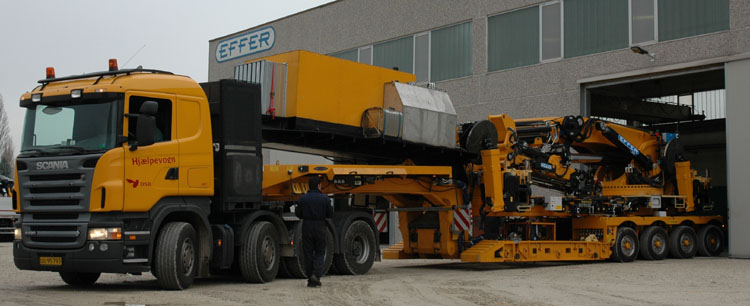 |
I was at Centro Gru, an Effer dealer and builder north of Bologna, shortly for Christmas 2008 to photograph this new Effer crane. Centro Gru does a lot of crane mountings for Effer from Castel Maggiori, about a half hour drive from them. The also did this new railway recovery unit for the DSB, the danish railways.
Pleas notice: the crane isn't quit finished yet, what especially can be seen by the many unpainted parts. The final product of course will have the usual Effer quality. |
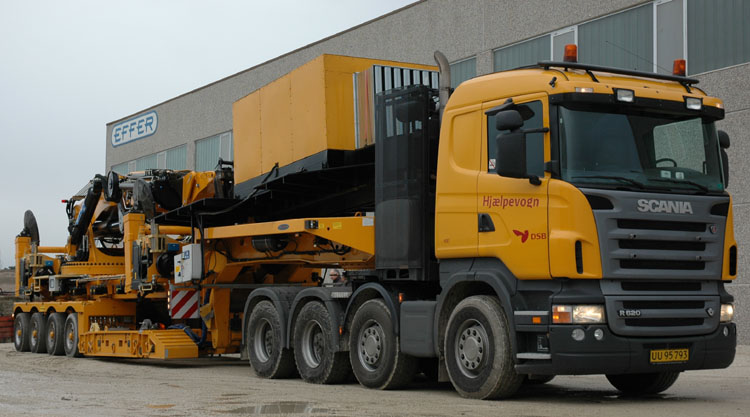 |
The crane is standing on a 4-axled Faymonville Pendelmax lowloader that is pulled by a new Scania R620 8x4 tractor. The tractor has it's own report here. |
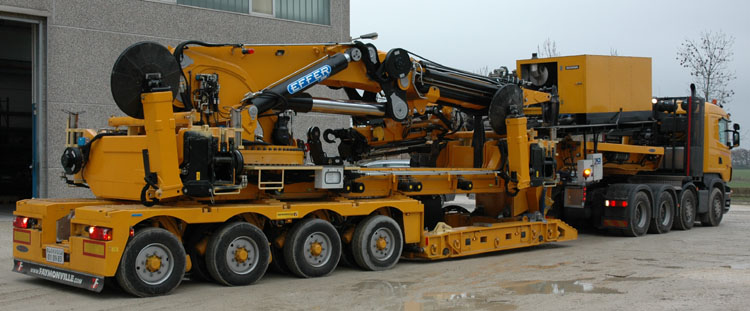 |
The crane is a further development of the 2750 unit and is now called the 3000. The entire construction as rail recovery unit has, just like with the DSB 140 models, gotten the name of the costumer again and is therefore called DSB 3000.
DSB again has chosen a knuckleboom crane, first of all because of the good experiences with the both 140's that are still in service. The concept of these cranes lets you lift very heavy loads with a horizontal boom. This way the crane can get in between the train and the overhead lines. The concept with quick road transport and going onto the tracks on the place of the accident was again requested, this is the reason why this crane is mounted on this truck/trailer combination. |
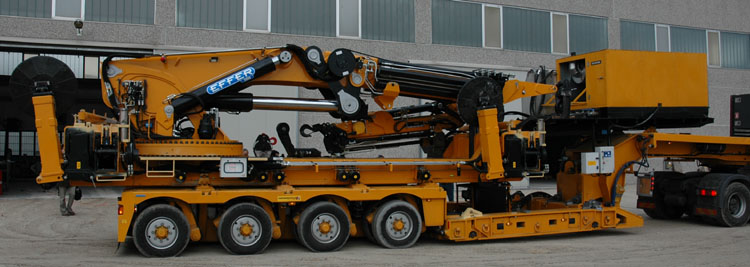 |
The entire crane unit with support frame, outriggers and gooseneck with power unit can slide over the trailer and can also be completely demounted from the trailer. Here the unit is slid into the position where the crane is allowed to work. The front position, like in the previous photo, is the transportposition. The trailer will get a set of rail-wheels when it gets to danmark, this way the trailer can drive on the tracks by itself (without the Scania tractor). The front wheels are mounted in the vessel-bed. The rear set of wheels will be stored behind the crane, above the trailer, during road transport. On the tracks they will tilt down and land under the overhanging part of the crane. On the tracks the trailer will be operated from a operationg-stand that will be mounted at this side of the trailer. |
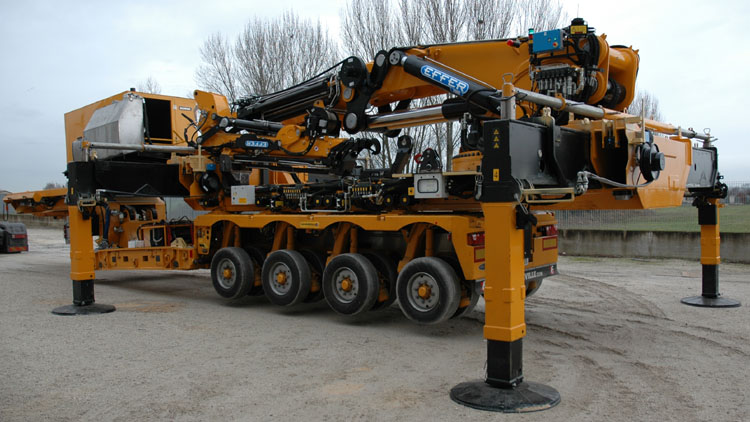 |
The crane is now on it's outriggers. The trailer now hangs at the craneframe. The crane with trailer weighs about 70 tonnes, something that provides good stability. The crane is driven by a power unit that is mounted on the 2nd gooseneck. Beside the power unit are the oil- and dieseltank. A Scania 9-liter engine is powering the unit. It drives 2 heavy oilpumps that power the crane, and will also power the railwheels later on. In the vessel-bed there is another power unit, this one provides the hydraulics for the trailer. |
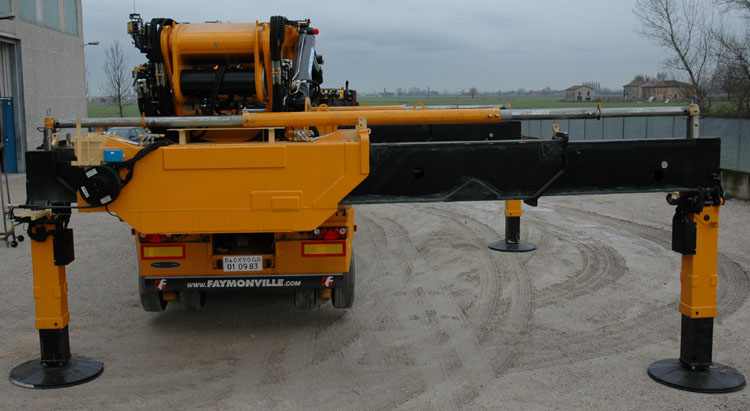 |
As the crane usually aproaches the accident site by driving on the 2nd track (with double tracked railroads), it stands rather close to the train that has to be lifted. To get enough distance between the crane and the train, the outriggers have got a side-shift system. The pipes that connect both outrigger ends make sure that the outriggers stay at the same distance from eachother during the sliding. Here the crane has shifted from the middle to the left... |
 |
...and in a short time it is shifted to the other side. The width of the crane in transportposition is 3 meter, this way the outriggers only need to be extendable twice. |
 |
Time to lift something. The hook has been mounted to the crane, the crane is up and turns towards the ballast. At this side of the frame lies the jib and some lift- and winch materials. |
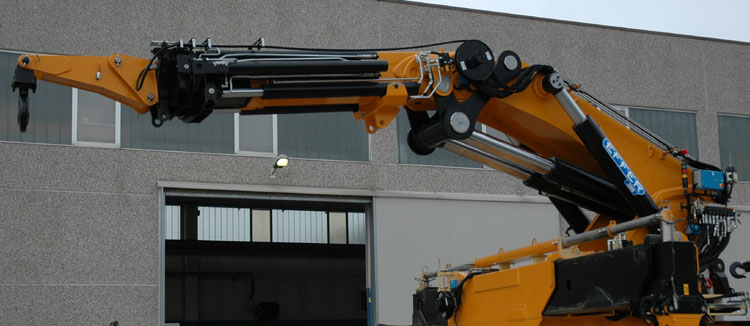 |
This photo shows that, although the crane is based on the shapes of the 2750, it is newly designed crane. The dimensions are larger, for example the sice of the slew ring. The cylinders under the telescopic boom are now a set of 2, the 2750 only has 1 large unit. The head of the telescopic boom has 2 steel plates welded on it, they now carry the special lifting head that gives a high hook mount. When this head is off, the jib can be mounted to these plates. |
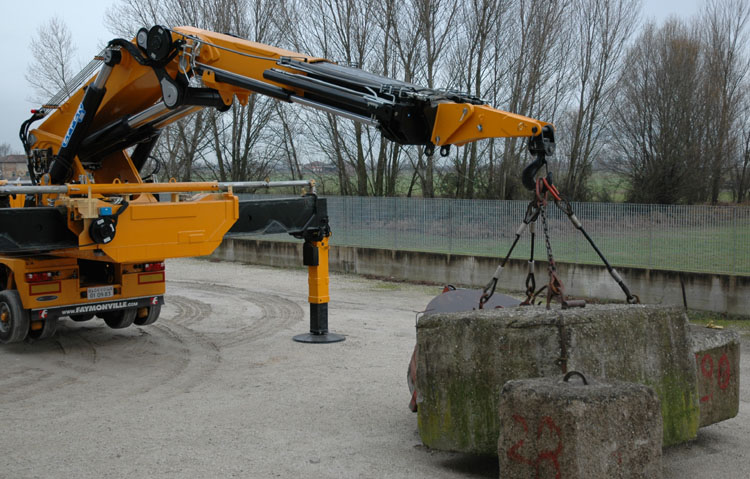 |
Here the lifting starts with a nice load, 32 tonnes of concrete and steel.
The lifting table of the 4x extending crane without jib (temporary values):
55 ton at 3,2 meter (main boom vertical)
43,9 ton at 5,7 meter
34,2 ton at 7,45 meter
32 ton at 8 meter
27,5 ton at 9,35 meter
22,75 ton at 11,4 meter
19,3 ton at 13,6 meter
This gives a maximum lifting capacity of 262 ton/mtr! The special head gives about 1 meter extra outreach. |
 |
This weight was lifted at a distance of 9 meters, which means a lifting capacity of 288 ton/mtr. They where lifting with over-capacity here, for the tests. |
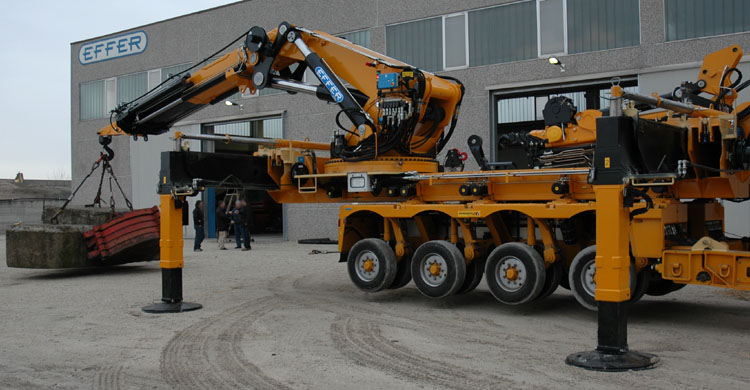 |
It is remarkable how stable the entire unit is, this load was lifted without any effort! |
 |
The crane can also be used with this jib, it is a newly designed unit that can lift up to 14,5 tonnes. This weight can be lifted up to a height of 16 meter. The 4x extending jib gives the crane a total outreach of 25,3 meter where it will still lift 3,05 tonnes. (lifting values are temporary). A winch is also mounted on the jib. |
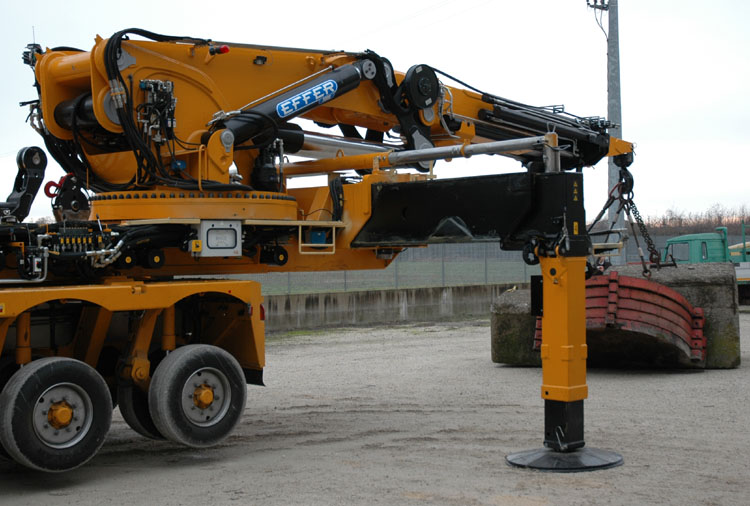 |
The same 32 tonnes where lifted here with the boom in a flat position. |
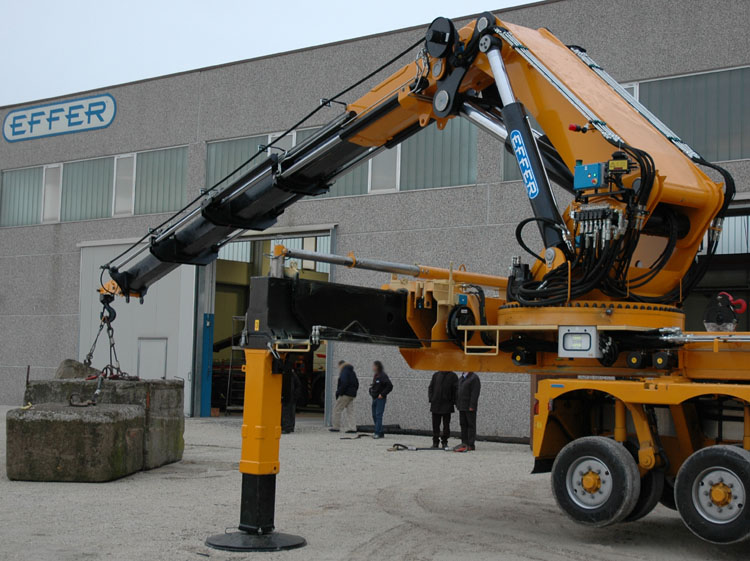 |
To show the lifting capacity at larger distances, they changed the weight to 18 tonnes. This was lifted at full outreach. |
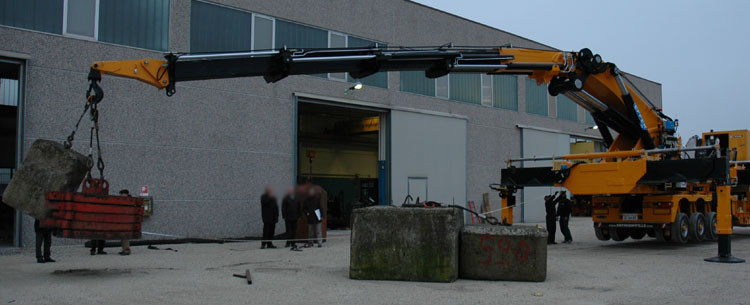 |
That is, with this head, about 14,5 to 15 meter. The jib wasn't used at this day and I didn't had time the next day, so I can't show you that right now. |
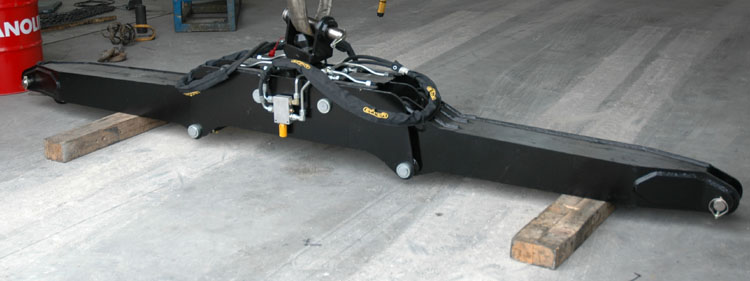 |
I do want to show you this 32 tons spreader, it has been made especially for recoveries. It is mounted directly to the crane so that it sits the closest to the boom. This way the height-loss is minimal. |
 |
Here it is mounted to the special head of the crane, the hook is on the ground. This spreader can rotate hydraulically and has 2 arms that can move hydraulically. With this spreader they can lift very close over the top of wagons. This is especially important when there are overhead lines. |
| |
Many thanks to the companies Effer and Centro Gru for the friendly reception |
| |
| Update: Below you find a promotial video of Effer about the DSB3000, click to start |
|
| |
| Back to the Effer index |